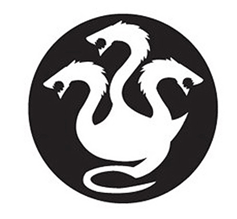Fundamental four directional punch pattern
Fundamental four directional block pattern
Chon-Ji literally means ‘Heaven and Earth’. In the Orient it is interpreted as the beginning of the world or the creation of human history, therefore it is the initial pattern performed by the beginner. It consists of two similar parts, one representing Heaven and the other representing the earth. (19 moves)
Dan-Gun is named after the Holy Dan-Gun, the legendary founder of Korea in the year 2333 B.C. (21 moves)
Do-San is the pseudonym of the patriot Ahn Chang Ho (1876 – 1938). The 24 movements of this pattern represent Mr. Ahn’s life which he devoted to furthering the education of Korea and it’s independent movement. (24 moves)
Won-Hyo is named after the noted monk who introduced Buddhism to the Silla Dynasty in the year 686 A.D. (28 moves)
Yul-Gok is the pseudonym of a great philosopher and scholar Yi I (1536-1584) nicknamed the ‘Confucius of Korea’. The 38 movements of this pattern represent his birthplace on 38 degrees latitude and the diagram represents the word ‘scholar’. (38 moves)
Hwa-Rang is named after the Hwa-Rang Youth Group which originated in the Silla Dynasty in the early 7th Century. The 29 movements refer to the 29th Infantry Division where Taekwon-Do developed into maturity. (29 moves)
Choong-Moo was the name given to the great Admiral Yi Soon-Sin of the Lee Dynasty. He was reputed to have invented the first armoured battleship (Kobukson) in 1592, which is said to be the precursor of the present day submarine. The reason why this pattern ends with a left hand attack is to symbolize his regrettable death, having no chance to …(30 moves)
KWANG–GAE is named after the famous Kwang–Gae-Toh-Wang, the 19th King of the Koguryo Dynasty, who regained all the lost territories including the greater part of Manchuria. The diagram represents the expansion and recovery of lost territory. (39 moves)
Po-Eun is the pseudonym of a loyal subject Chong Mong-Chu (1400) who was a famous poet and whose poem “I would not serve a second master though I might be crucified a hundred times” is known to every Korean. He was also a pioneer in the field of physics. The diagram represents his unerring loyalty to the king and country towards the end of the …(36 moves)
Ge-Baek is named after Ge-Baek, a great general in the Baek Je Dynasty (660 AD). The diagram represents his severe and strict military discipline. (44 moves)
Choong-Jang is the pseudonym given to General Kim Duk Ryang who lived during the Lee Dynasty, 14th century. This pattern ends with a left-hand attack to symbolize the tragedy of his death at 27 in prison before he was able to reach full maturity. (52 movements)
Juche is a philosophical idea that man is the master of everything and decides everything, in other words, the idea that man is the master of the world and his own destiny. It is said that this idea was rooted in Baekdu Mountain which symbolizes the spirit of the Korean people. The diagram ( | ) represents Baekdu Mountain. (45 movements)
Is the pseudonym of Son Byong Hi, leader of the Korean independence movement on March 1, 1919. The 45 movements refer to his age when he changed the name of Dong Hak (Oriental Culture) to Chondo Kyo (Heavenly Way Religion) in 1905. The diagram ( | ) represents his indomitable spirit, displayed while dedicating himself to the prosperity of his nation. (45 movements)
Sam-Il denotes the historical date of the independence movement of Korea which began throughout the country on March 1, 1919. The 33 movements in the pattern stand for the 33 patriots who planned the movement.
